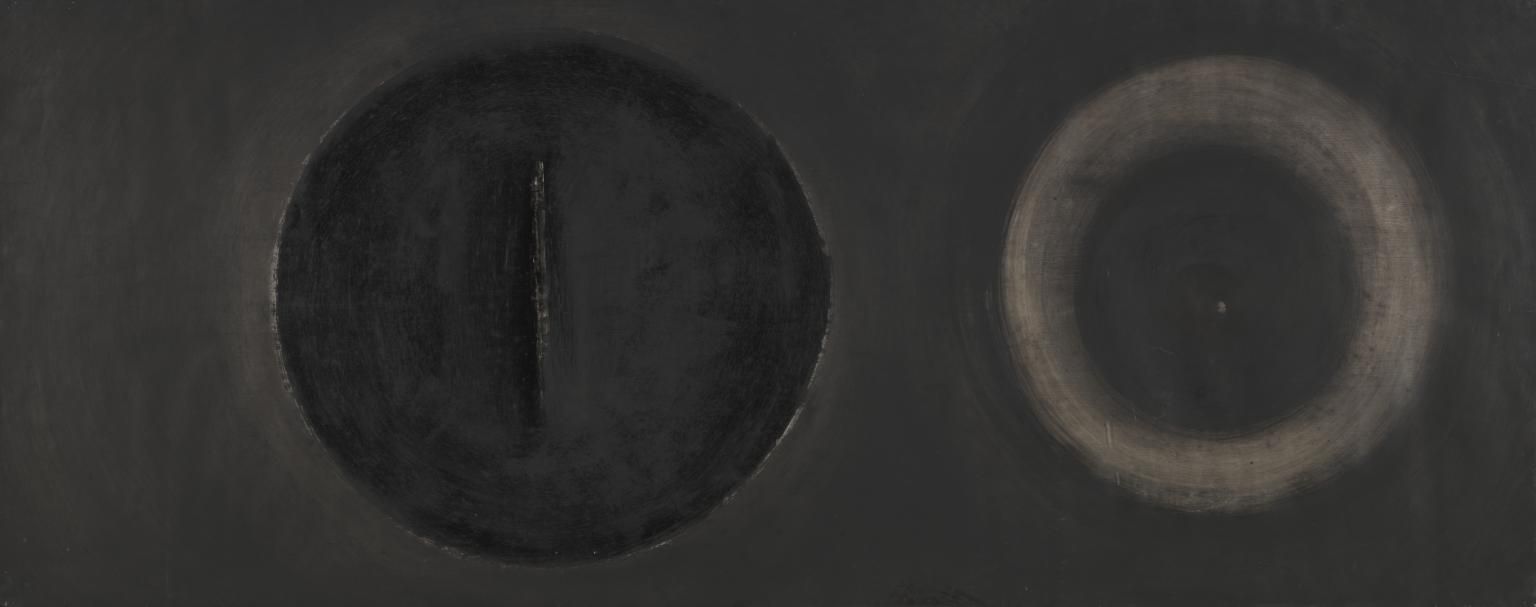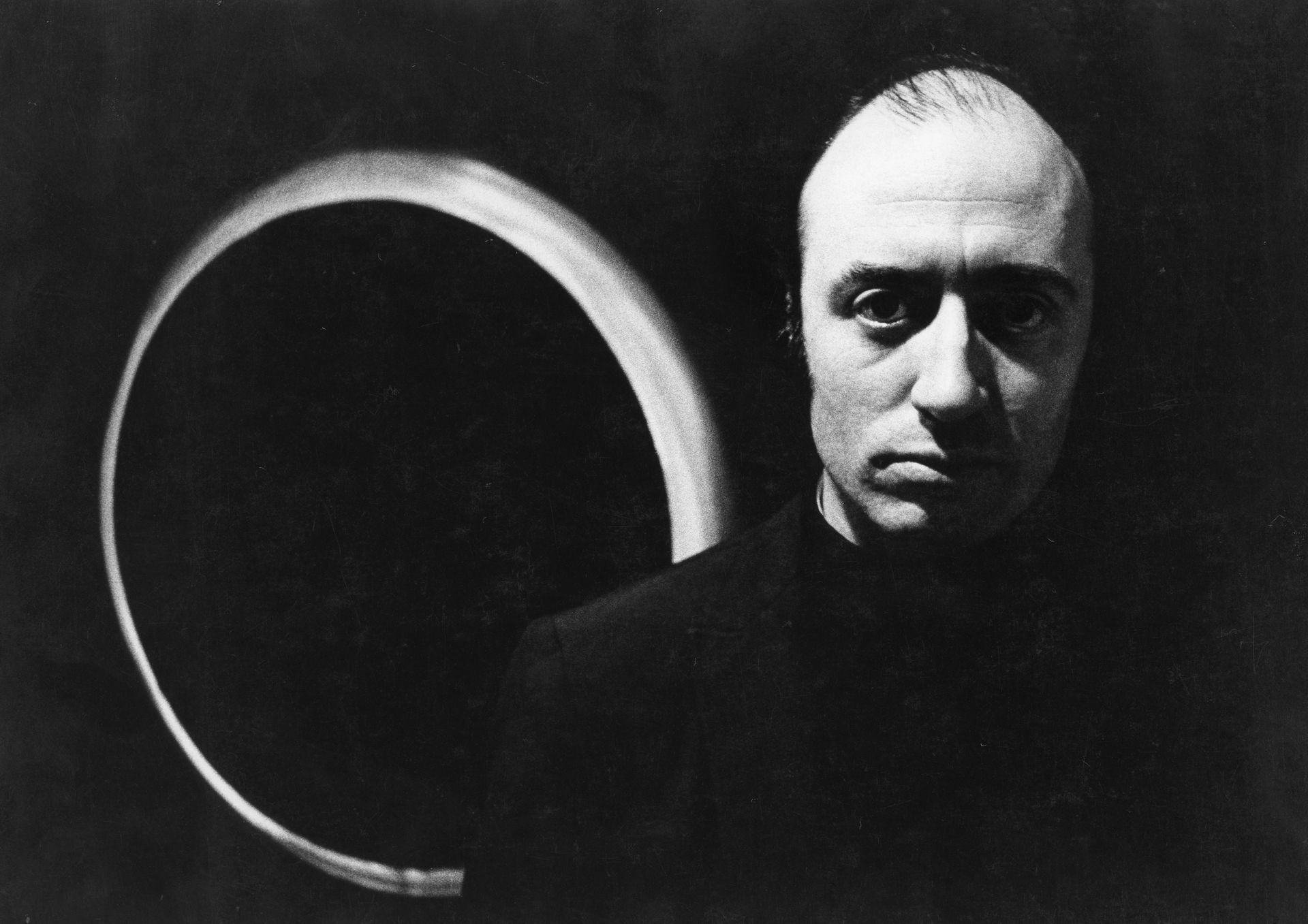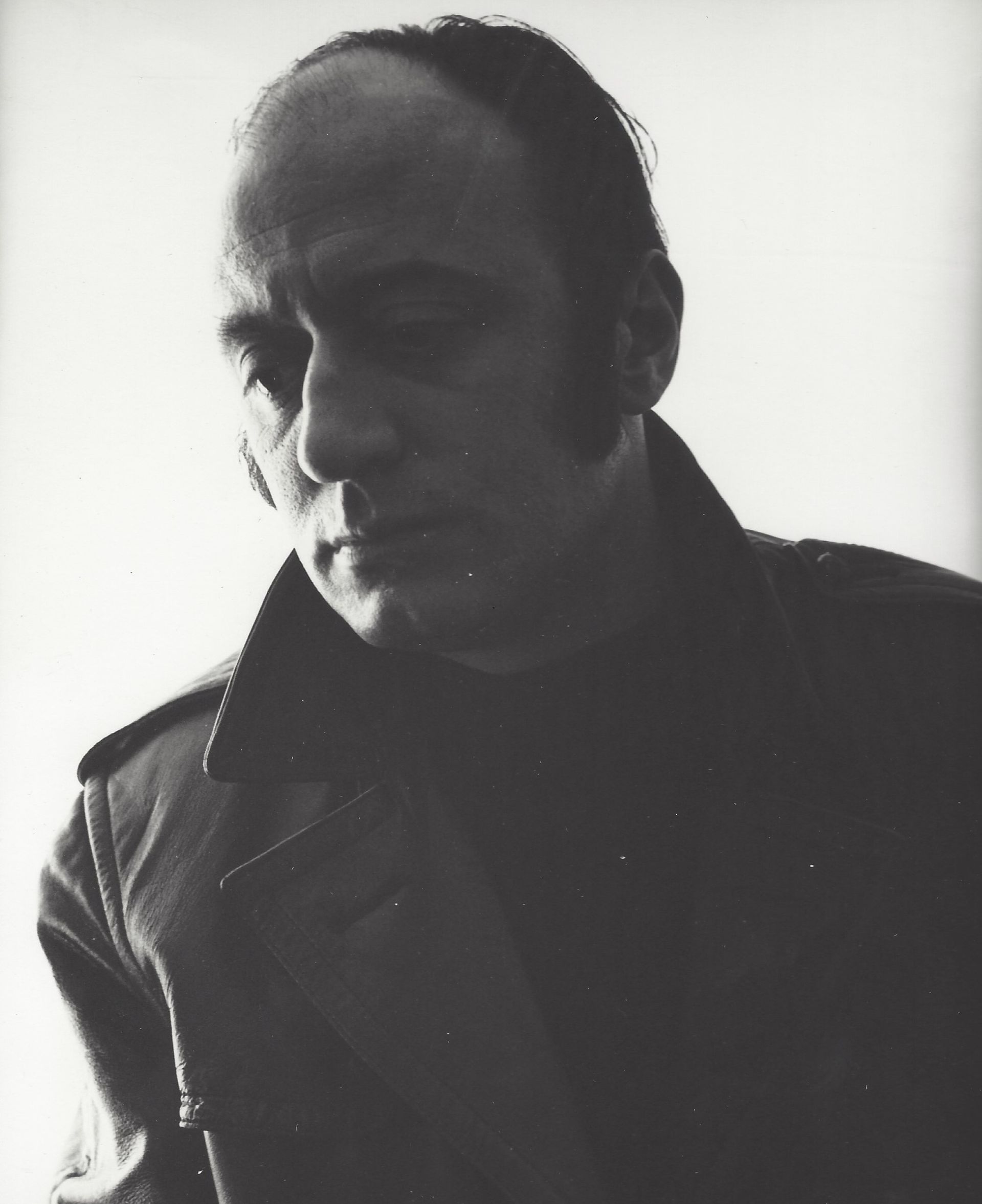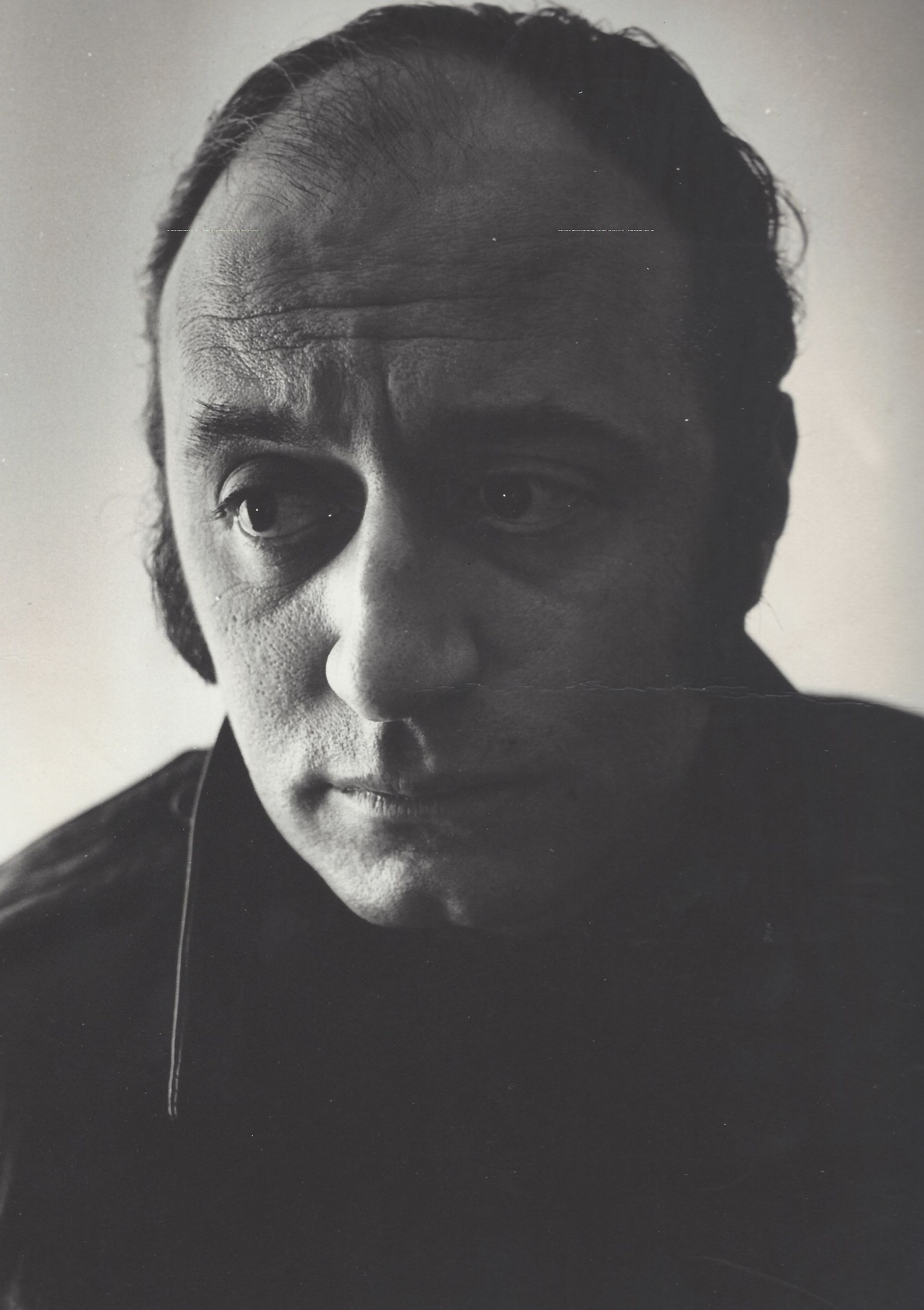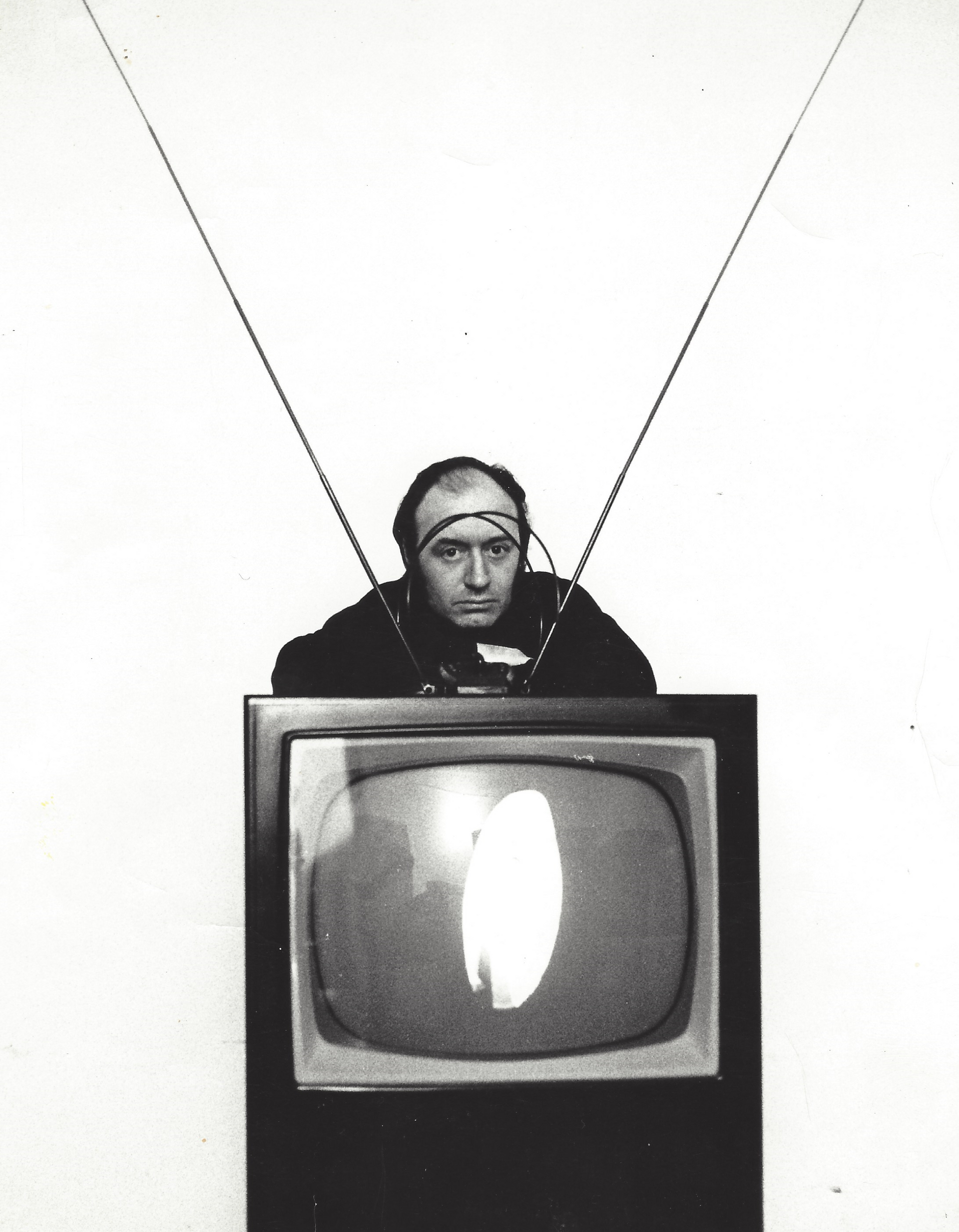Aldo Tambellini
Biography
As experimenter, agitator, and catalyst of aesthetic and social change, Aldo Tambellini shaped the landscape of experimental new media art in the 20th century. Encompassing painting, sculpture, film, video art, and poetry, Tambellini, not only conceived unprecedented artistic formats but also established innovative social organizations and venues, convinced that “creation” art was not a commodity of a status-seeking class, but “the vital energy of society.” The color black, which was central to Tambellini’s work since the 1960s, reflected his holistic spiritual, artistic, and social approach – from aesthetic traditions and unanticipated circumstances, to the atrocities of the Second World War, the fascination with outer space to the eternal struggle for social justice, “Black”, noted Tambellini in 1967, “is the expansion of consciousness in all directions.”
Aldo Tambellini was born on April 29, 1930, in Syracuse, New York. Following the separation of his parents, John and Gina Tambellini, his mother took him and his brother to live with relatives in Lucca, Italy in 1931. His childhood was scarred by the Second World War when bombings destroyed his neighborhood in 1944, resulting in the tragic loss of twenty-one friends and neighbors. Tambellini, having survived, was left profoundly traumatized.
In 1946, Aldo Tambellini returned to the United States, “being a foreigner in the land I was born.” After earning a BFA in painting from Syracuse University in 1954 and an MFA in sculpture from the University of Notre Dame in 1959, he relocated to New York’s Lower East Side, joining the artistic underground. There, in 1962, he also made the acquaintance of poets from the UMBRA collective, one of the first civil rights Black literary groups. Some of these poets would later participate in his “Electromedia” performances. That same year, Tambellini began publishing an underground newsletter titled “The Screw” in which he criticized the art establishment for using the artists as a commodity and their work for financial investments. At the same time, he co-founded Group Centre, which united sculptors, poets, photographers, musicians, dancers, and filmmakers, anticipating the social activism of the late 1960s and the guerrilla art tactics of later movements.
In the years that followed, Tambellini became a major transformative force for the New York art scene: In 1966, together with his then partner, Elsa Tambellini, he opened the Gate, a 200-seat theatre in the heart of the East Village. There they screened early films by filmmakers such as Brian De Palma, Jack Smith, Robert Downey and Kenneth Anger. One year later, in 1967, together with the German artist, Otto Piene, Tambellini established a second theatre, the Black Gate, on the upper floor of the Gate, the first New York experimental space for artists. It became a magnet for the then avant-garde of performance and media art, including artists such as Yayoi Kusama, Nam June Paik and Charlotte Moorman.
The year 1963 marked the beginning of Tambellini’s exploration of new media. Originally trained as a painter and sculptor, he started to experiment with 35 mm slides, scratching off the color emulsion and perforating the film, subsequently projecting these “Lumagrams” onto the facades of apartment buildings. In the years that followed, Tambellini created beautifully austere and hypnotically immersive films, performances, and environments of painterly and poetic quality, fundamentally transforming our understanding of the potential of the use of new media in the arts. Beginning with “Black Is” in 1965, Tambellini launched a series of seven “Black Films” treating celluloid as a type of sculptural and painterly medium. The politically charged works are masterpieces of Expanded Cinema. The event “Black Zero” (1968) was exemplary of Tambellini’s groundbreaking “Electromedia” performances at that time. The performance, an overwhelming synthesis of sounds, words, live music, lights, and projected slides, started with a recorded voice of Calvin Hernton (UMBRA poet) addressing racial injustice and ended with a giant black floating balloon bursting above the heads of the audience. Tambellini’s compelling environments and performances, fusing diverse art forms and media, exerted a considerable influence on numerous artists, among them, on works such as Andy Warhol “Exploding Plastic Inevitable.”
Already recognized for his important contributions to “Expanded Cinema” Tambellini then also became a seminal figure in the emergence of video art. In 1966, he obtained an early model of the Sony CV 2000 video recorder, and by December 1967, his initial tape had been broadcast. In 1968, he was featured in the celebrated “TV As A Creative Medium” exhibition at the Howard Wise Gallery in New York. With “Black Gate,” which was presented on German television in 1968, he realized – together with Otto Piene – one of the world’s first works of art created for television.
From 1978 to 1984, Tambellini, served as a fellow at the Center for Advanced Visual Studies (CAVS) at the Massachusetts Institute of Technology, directed by his friend Otto Piene. During this period, his profound reflection of the interplay between technology, culture, and society, already apparent in his film and television works, expanded into the realm of telecommunications. With his research at CAVS he sought to confront the emergence of a new environment for mankind, that would not only transform the arts, but affect “all social and human interaction as we have previously known it to be.” Exemplifying these reflections was the concept of “Communicationsphere,” an interactive social network that connected artists, engineers, and technicians worldwide, anticipating the ideas of the Internet.
In the following years, Aldo Tambellini continued to engage with moving images, but he increasingly concentrated on poetry and its performance, often accompanied by video projections and music. After the turn of the millennium, Aldo Tambellini and his important contribution to the arts was rediscovered and his works shown worldwide: The performance “Black Zero” was revived at “Performa,” New York in 2009, followed by exhibitions at the Tate Modern (2012), the Italian pavilion in the 2015 Venice Biennale, the ZKM |Center for Art and Media in Karlsruhe (2017).
Aldo Tambellini’s contributions to 20th-century art are immense and cannot be overstated. As both an artist and a cultural activist, he provided crucial insight and was instrumental in creating influential structures. His work demonstrates how aesthetic innovation can be seamlessly intertwined with activism against racism, exploitation, and war.
Written by Margit Rosen, ZKM | Karlsruhe
Museum Collections
SELeCTED EXHIBITIONS, ELECTROMEDIA PERFORMANCES, SCREENINGS AND BROADCAST TELEVISION
Tambellini has exhibited his work in important institutions such as Tate Modern, MoMA, ZKM, Centre Georges Pompidou and the Venice Biennale. He is credited with two major television events, “Black Gate Cologne,” broadcast on a television station in Germany (1968) and “The Medium is the Medium,” organized by WGBH Boston. (1969). Tambellini was included in seminal video exhibitions such as; “A Special Video Show,” Whitney Museum of American Art (1971), “Vision and Television,” Rose Art Museum, Brandeis University (1970), “TV as a Creative Medium,” Howard Wise Gallery (1969), and “Some More Beginnings- Experiments in Art and Technology,” Brooklyn Museum in Collaboration with Museum of Modern Art (1968)
In His Own Words
ARTIST CHRONOLOGY
Poet, painter, sculptor, filmmaker and pioneering multi-media artist, Aldo Tambellini became a notable figure in Manhattan's Lower East Side in the 1960’s. Despite his notoriety, his life was a collection of profound trauma, mental illness, disillusionment, depression, and disenfranchisement. At an early age, he found art, his lifeblood, a creative outlet to give him strength, vitality, and validation. He created art to be accessible to everyone, using it as a vehicle to build friendships, advocate for the marginalized, promote political activism, and advance technology. Consumed by manic episodes of creative innovations, Tambellini was rarely at peace, constantly striving to do better, which frequently left him frustrated and exhausted. A contemplative person, Tambellini never stopped exploring art, science and technology and how they could be merged into something extraordinarily powerful. Although Tambellini achieved notoriety early in his career, most of his life was marked by anger which left him alienated from the art world. It was only towards the end of his life that his oeuvre began to be recognized for its impact on the use of innovative technology to create new forms of art. Today, Tambellini is considered to be an early pioneer of New Media, influencing generations of artists that came after him.

Photograph by Don Snyder


